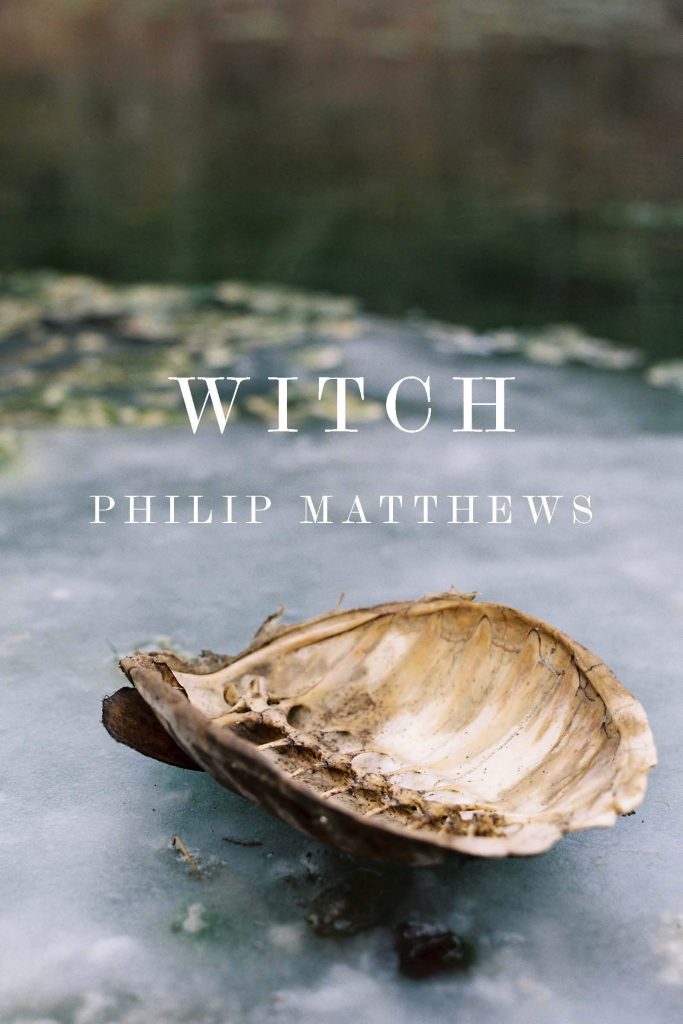
REVIEW BY GABINO IGLESIAS
—
It’s probably impossible to read thirty poetry collections in thirty days and not come across a variety of voices, approaches, and styles. The beauty of such an exercise is that different styles jump at you and you learn to accept them all, to navigate whatever you encounter with the same attention. I’ve been reading poetry that tells clears stories lately. You know, the kind of poetry where you can easily identify slices of the poet’s biography or know exactly who shows up in a poem as well as when and where it happened. Philip Matthews’s Witch was a departure from the realm of clarity and straightforward storytelling in verse.
Witch pulls readers into a world of angels, demons, shells, and strangeness. In fact, more than a poetry collection that can be easily compared to other books, the easiest way to “explain” this collection is to compare it to arthouse films. Just like arthouse, we know we’re in the presence of art and enjoy the elements we’re able to fully grasp while rolling with—and often also enjoying—that which is beyond immediate comprehension. Sure, we know there’s a woman in many poems here names Petal and we know there is love, fatherhood, water, transformation, and pain in these poems. We also read lines like “I rinse her cock with/abundant energy” or “we are trying/to scry out/a gender” and understand there is a discussion of gender and queerness rippling right at the surface. However, the rest evades us. Witch is a festival of language and meaning waiting to be decoded. “The Five Shades in Her Neck” is a perfect example:
“Petal peels back you.
Bell stitched to her headskin.
Bicycle.
Chased through the eight sun.
She freezes.
She is a strict gun.
Stunning you with her hand.
Her hand immediately in your hair.
Sunni red.
Tined and constellated.
The targeting wind in her neck.”
Yes, some of the stuff in Witch is confusing, and that’s okay. Why is Petal 1,002 years old? What is the significance of being married to two angels? Why do women appear as tentacled in a poem? Why is the headless angel kneeling? Why do other angels “drift along the periphery/of sheep”? I don’t know, but reading about them is an exercise in poetry, a way to enter a different world and encounter words strung together in ways you’ve never encountered them before. This is one of the beautiful things poetry can offer, and it’s what the core of Witch is made of.
—
Gabino Iglesias is a writer, editor, literary critic, and professor living in Austin, TX. He is the author of ZERO SAINTS and COYOTE SONGS. You can find him on Twitter at @Gabino_Iglesias.
![[PANK]](https://pankmagazine.com/wp-content/themes/pank/assets/images/pank-logo-large.png)
